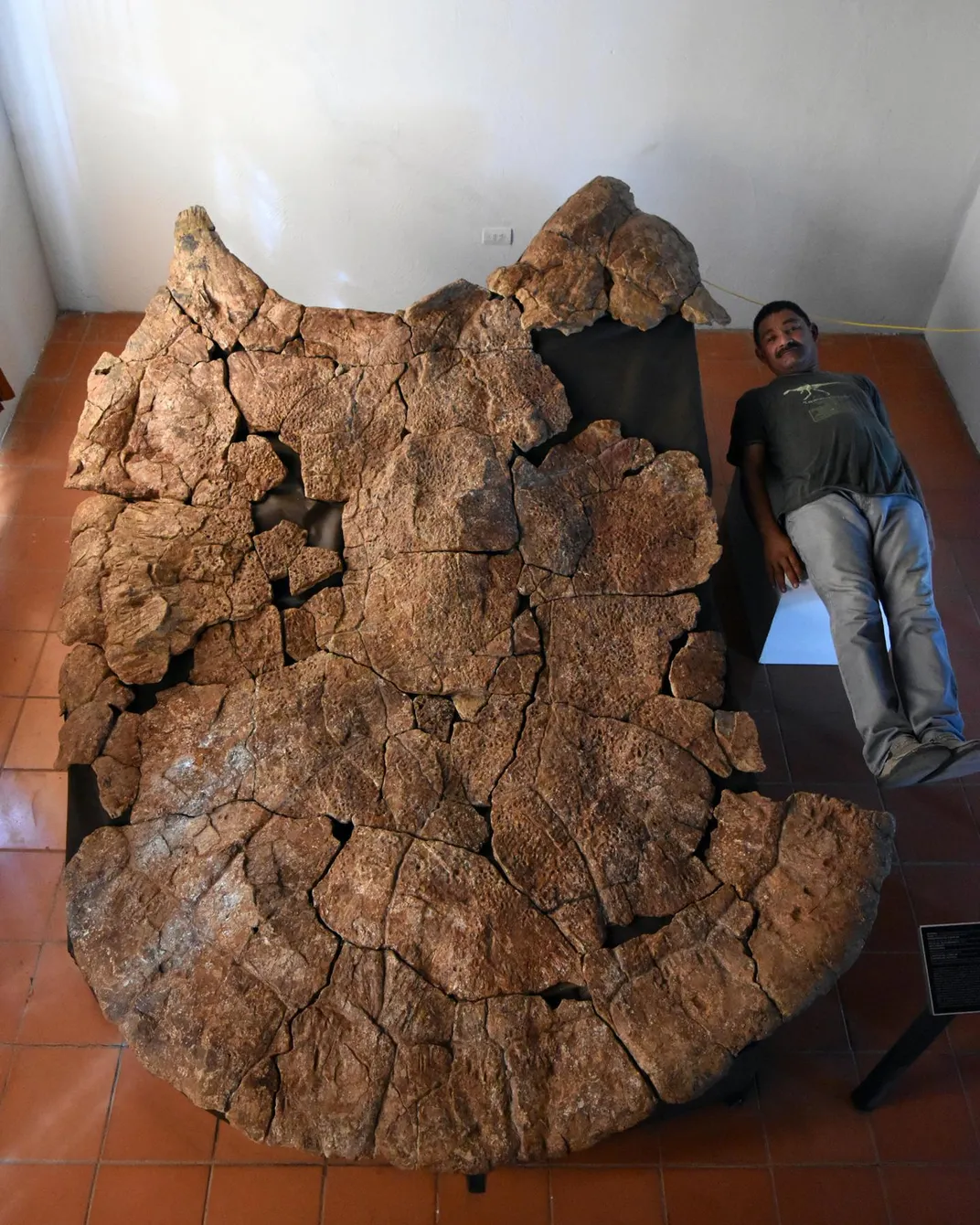Gigantic Turtles Fought Epic Battles 10 Million Years Ago—and Have the Scars to Prove It
Their shells were 10 feet wide and equipped with foot-long horns on both shoulders
/https://tf-cmsv2-smithsonianmag-media.s3.amazonaws.com/filer/13/21/132197f0-390e-4b72-b684-1fd3a97b9a24/2020_feb13_giantturtle_copy.jpg)
Researchers have uncovered complete fossils of the giant turtle Stupendemys geographicus in Venezuela and Colombia. The fossils, including a gigantic top shell and the first examples of S. geographicus jaw bones, give new insight into the lives of ancient South American giant turtles.
Although the fossils were dug up in deserts, five to ten million years ago the land that’s now northeast Brazil, Peru, Colombia and Venezuela was covered in deep swamps and rivers that supported giant reptiles. The paper, published in Science Advances on February 12, shows that S. geographicus turtles had shells up to ten feet across. For comparison, a standard United States freeway lane is 12 feet wide.
It was “one of the largest, if not the largest turtle that ever existed," says University of Zurich paleobiologist Marcelo Sánchez in a statement.

The creatures, which at 2,500 pounds weighed nearly as much as a hippopotamus, were not just massive but also well-armed. New specimens found by the research team have a foot-long horn on each shoulder, and one horn had a long scar down its side. Sánchez says that the horns were likely used by males to battle for mates.
"[The horns] are really striking and bizarre,” University of Fribourg paleontologist Walter Joyce, who was not involved in the research, tells Gretchen Vogel at Science magazine. Joyce adds that little is known about S. geographicus’ closest modern relative, which could have given more clues into the ancient turtle’s behavior.
The horns would also have been useful defense against predators like 40-foot crocodile-like caimans that were longer than a standard telephone pole is tall. Several of the shells show bite marks, and one had a tooth still embedded in it.
Given their fearsome size, the giant turtles might have been formidable predators themselves. Fossils of their jaws resemble those of modern turtles that eat fish and other turtles, and a flat bone in the center of the roof of the giant turtle’s mouth might have been used to crush mollusks. The researchers write that their diets could have been varied, though, and also included large palm fruits.
And it’s possible that their size was their downfall. About 5 million years ago, their habitat began to change as the Amazon River cut its path through the landscape. The marshes shrunk, and habitats became more specific.
“If you’re really large, and your space is decreased, you’ll be under a lot of pressure and stress,” Universidad del Rosario paleontologist Edwin Cadena tells Discover magazine. A ten-foot turtle would need a lot of space to roam and water to support its bulk. As the broad range of marshes called the Pebas system habitat disappeared, so did the turtle.
“For many decades, it was this forgotten species,” Cadena tells Discover. “And we’re bringing it back to life with fascinating specimens.”